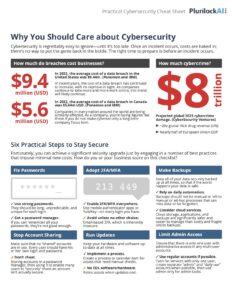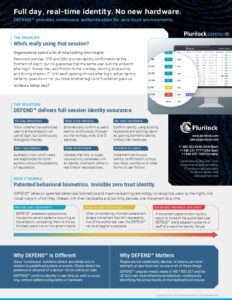In the ever-evolving landscape of cybersecurity, one concept stands out as a cornerstone for safeguarding digital assets and sensitive information: advanced authentication. As cyber threats become more sophisticated and prevalent, traditional methods of authentication, such as passwords, are proving to be increasingly inadequate. Advanced authentication techniques offer a multifaceted approach to verifying user identity, thereby fortifying defenses against unauthorized access and data breaches. This deep dive into advanced authentication will explore its definition, significance, and delve into its critical importance in today’s cybersecurity landscape.
What is Advanced Authentication?
Advanced authentication, also known as multifactor authentication (MFA) or strong authentication, is a security mechanism that requires users to provide multiple forms of verification before gaining access to a system or digital resource. Unlike traditional single-factor authentication, which typically relies solely on something the user knows (e.g., a password), advanced authentication incorporates additional factors such as something the user has (e.g., a smartphone or token) and something the user is (e.g., biometric data like fingerprint or facial recognition).
Why Does Advanced Authentication Matter?
The importance of advanced authentication cannot be overstated in the realm of cybersecurity. Here are several reasons why it matters:
- Mitigating Credential Theft: Passwords, the most common form of single-factor authentication, are susceptible to theft through various means such as phishing, keylogging, and brute force attacks. Advanced authentication adds layers of security, making it significantly harder for attackers to compromise user credentials.
- Enhancing Security Posture: By requiring multiple forms of authentication, advanced authentication significantly reduces the likelihood of unauthorized access. Even if one factor is compromised, the additional layers act as barriers, thwarting attackers’ attempts to gain entry.
- Compliance Requirements: Many regulatory frameworks and industry standards, such as the Payment Card Industry Data Security Standard (PCI DSS) and the General Data Protection Regulation (GDPR), mandate the implementation of strong authentication measures to protect sensitive data. Failure to comply with these regulations can result in severe penalties and reputational damage.
- Protecting Remote Access: With the proliferation of remote work and cloud-based services, securing remote access has become paramount. Advanced authentication provides an extra layer of defense against unauthorized access attempts, especially for remote workers accessing corporate networks and resources from various locations and devices.
- Preventing Account Takeover: Account takeover (ATO) attacks, where malicious actors gain unauthorized access to user accounts, are a prevalent threat in cyberspace. Advanced authentication helps prevent ATO attacks by requiring additional verification beyond just a username and password, thereby thwarting attackers’ efforts.
In-Depth Analysis of Importance
Let’s delve deeper into the critical importance of advanced authentication in today’s cybersecurity landscape:
- Defense Against Credential Stuffing: Credential stuffing attacks involve automated bots attempting to log in to user accounts using stolen credentials obtained from data breaches. Advanced authentication disrupts these attacks by requiring additional verification beyond just usernames and passwords. Even if attackers possess stolen credentials, they would still need to bypass other authentication factors, significantly raising the bar for successful infiltration.
- Adaptation to Evolving Threats: Cyber threats are constantly evolving, with attackers employing increasingly sophisticated techniques to bypass traditional security measures. Advanced authentication serves as a proactive defense mechanism against emerging threats by incorporating multiple layers of defense. Moreover, advanced authentication solutions often incorporate adaptive authentication capabilities, which dynamically adjust security measures based on risk factors such as user behavior and context, further strengthening defenses against evolving threats.
- User Convenience and Experience: While security is paramount, user experience and convenience are also essential considerations. Advanced authentication strikes a balance between security and usability by offering a range of authentication methods that are both secure and user-friendly. This may include biometric authentication methods such as fingerprint or facial recognition, as well as token-based or push-notification authentication, which offer seamless user experiences without compromising security.
- Resilience Against Insider Threats: Insider threats, whether intentional or unintentional, pose a significant risk to organizations’ security posture. Advanced authentication helps mitigate insider threats by implementing stringent access controls and requiring multiple layers of verification. This ensures that even if an insider’s credentials are compromised or abused, additional authentication factors act as barriers to unauthorized access, minimizing the risk of insider-driven security incidents.
- Protection of Critical Assets and Intellectual Property: For organizations handling sensitive data, intellectual property, or proprietary information, advanced authentication is essential for protecting critical assets from unauthorized access and exfiltration. By implementing robust authentication mechanisms, organizations can enforce access controls tailored to the sensitivity of the data, ensuring that only authorized personnel can access and interact with sensitive resources.
- Prevention of Identity Theft: Identity theft is a pervasive threat in the digital age, with attackers leveraging stolen credentials to impersonate legitimate users and perpetrate fraudulent activities. Advanced authentication plays a crucial role in preventing identity theft by requiring additional verification beyond just usernames and passwords. This makes it significantly harder for attackers to impersonate legitimate users and gain unauthorized access to sensitive accounts and resources.
- Support for Zero Trust Architecture: Zero Trust Architecture (ZTA) is an emerging security paradigm that assumes zero trust in both internal and external networks. Central to ZTA is the principle of “never trust, always verify,” which emphasizes the importance of continuously verifying the identity and security posture of users and devices accessing network resources. Advanced authentication aligns closely with the principles of ZTA by requiring rigorous authentication and authorization mechanisms regardless of the user’s location or network context.
Conclusion
In conclusion, advanced authentication stands as a linchpin in modern cybersecurity defenses, providing a robust and multifaceted approach to verifying user identities and safeguarding sensitive resources. By incorporating multiple authentication factors and adaptive security measures, advanced authentication not only enhances security posture but also addresses the evolving threat landscape and compliance requirements. As organizations continue to navigate the complex cybersecurity challenges of the digital age, advanced authentication remains a fundamental component of their defense strategy, offering resilience against a wide range of cyber threats and ensuring the integrity and confidentiality of critical assets.














